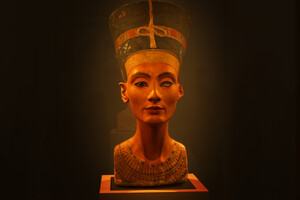As well as the British Museum and the New Museum in Berlin, which keep the mentioned artifacts. Instead, the Louvre preserved the Dendersky zodiac. This is an Egyptian bas-relief from the ceiling of the pronaos (portico) of a chapel dedicated to Osiris.

World famous Egyptologist and archaeologist Zahi Hawass is calling on three European institutions to return iconic works of art that he says rightfully belong to Egypt. Havass plans to resume previous efforts amid a growing wave of cultural repatriation of looted colonial-era objects, artnet news writes.
In recent months, the Smithsonian has officially approved the return of 29 bronzes, Germany has made a landmark commitment to return Benin bronzes to Nigeria, and just a few weeks ago Arts Council England published a 33-page report detailing actions for UK institutions to “actively actions in the spirit of transparency, cooperation and justice”, when it comes to demands for restitution (restoration of violated property rights – ed.) and repatriation.
Read also: The knight's armor stolen in 1983 was returned to the Louvre < /p>
There is also a long-standing debate over the Parthenon Marbles, which were removed from the Acropolis in the 19th century by Lord Elgin and are now in the British Museum. An Oxford University scientist has put forward the idea of 3D printing an exact replica to leave in London, while the originals return to Greece instead.
Hawass says he will circulate a petition signed by leading Egyptian intellectuals citing the importance of the treasures he wants returned: the Rosetta Stone, which is in the British Museum in London; the ceiling of the Dendersky Zodiac in the Louvre in Paris; and a bust of Nefertiti in the Neue Museum Berlin.
“I think these three objects are unique and their home should be in Egypt,” Hawass said. – We have collected all the evidence that proves that these three things were stolen from Egypt.”
Rosetta Stone, stele, dated 196 BC. e., with hieroglyphs written in Ancient Egyptian, Demotic, and Ancient Greek, was discovered in Memphis, Egypt, in 1799 by the French officer Pierre-François Bouchard. When Napoleon's army was defeated two years later, the British took possession of the stone under the Treaty of Alexandria, and it has been in the collection of the British Museum since 1802.
Havass campaigned for the return of the objects for at least since 2003, when he served as Secretary General of the Supreme Council of Antiquities, calling the Rosetta Stone “an icon of Egyptian identity”. In 2011, Hawass requested to borrow artworks for the future Grand Egyptian Museum, but his request was denied.
Also read: Pyramid of Cheops artifact found in cigar box
Related video
In a statement to Art Newspaper, the British Museum said: “Visitors can see the Rosetta Stone along with other temple sights pharaohs, as well as in the wider context of other ancient cultures, such as that of Rome, Athens and Persia, allowing the general public to explore this object of history. But he did not provide an answer to questions about the return of the artifact to Egypt.
However, neither the Louvre nor the State Museums of Berlin responded to requests for comments at all.


